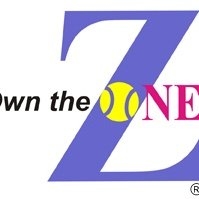It’s Racquet Science, not Rocket Science!
A number of scientifically-devised tests* were carried out under controlled and dynamic conditions in the lab and on the tennis court, to check the efficiency and performance of the Own the Zone (OTZ) band vibration dampener. These tests were performed by Dr. Nissim Benjuya Ph.D. Senior Lecturer, BioMedical Engineering and Physical Therapy, Ben Gurion University, Be’er Sheva, Israel.
Dr. Benjuya, age 53, an author and co-author of 53 scientific articles in the field of bio-mechanics, recently passed away. Dr Benjuya was also the Director of Motion Analysis at Children’s Hospital Sheba Medical Center, Ramat Gan, Israel and Director of the BioMechanics Lab at Kaye College of Education, Be’er Sheva, Israel. May his memory always be a blessing to those who knew him and to everyone he helped during his lifetime.
Specifications
All balls impact the racquet in the central region of the strings
- “Control” has no dampener on strings
- “Volts of Excitation” refers to an electrical signal caused by the movement or vibration of the strings and racquet immediately after ball impact
- Graph 3 recorded at ball speed of 40 – 50 miles/hr
- The sampling frequency was 10 Khz for one second of recording
- Graphs capture 300 – 500 millisecond (ms) time frame
- See Bar Graphs 4 and 5 for testing of Zone compared to other vibration dampeners
Test 1: Zone vs Control (no dampener on strings)
Conclusion: Zone, with considerably fewer and lower vibrations, levels out in shorter time than Control (no dampener on strings).
Test 2: Zone vs. Ordinary Elastic Band
Conclusion: Special compound OTZ band shows considerably fewer and lower vibrations, and shows smoother transition to normal state than an ordinary elestic band.
Test 3: Impact Speed 40–50 miles/hr – Zone vs. Control (no dampener on strings)
Conclusion: OTZ Band Dampenershows a much quicker return to steady state than Control (no dampener on strings).
Test 4: – Max Y amplitude – Maximum fluctuation of racquet observed in centimeters (cm) following ball impact. (Note: “Crepe” refers to Ordinary Rubber Band)
Conclusion: OTZ Band shows by a wide margin the second lowest racquet fluctuation compared against other dampeners.
Test 5: T2SS – Time to Steady State: Amount of time (fraction/second) until vibrations are dampened; measured from the sensor and video by motion analysis software.
Conclusion: OTZ Band Dampener returns to steady state (no measurable vibrations) in a shorter time than any other type of dampener.
*Tests carried out by Dr. Nissim Benjuya Ph.D. Senior Lecturer, BioMedical Engineering and Physical Therapy, Ben Gurion University, Be’er Sheva, Israel.
Dr. Benjuya is also the Motion Analyst at Children’s Hospital Sheba Medical Center, Ramat Gan, Israel and Director of the BioMechanics Lab at Kaye College of Education, Be’er Sheva, Israel.
Play Hard, Have Fun & Own the Zone!











